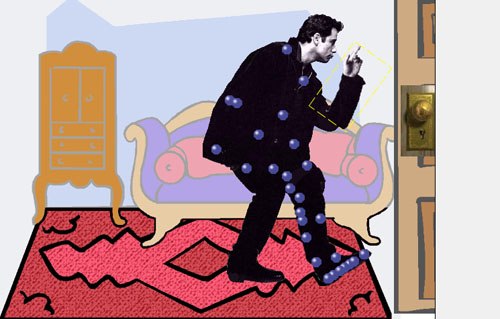We don't have to travel to some alternative future to look back at 2010 as the year in which animation technologies and talent has spread beyond the film and games industries to make a true difference in education. Its happening now and its pretty exciting.
George's father would be proud!
Some good friends mine stuck through four years of engineering curriculum mostly because their parents (mostly fathers) had concrete expectations of their children (mostly sons) contributing to society. Of course, we suspected that the well-paid pillar-of-society stereotype of the job might have had something to do with it. So, after switching majors from engineering to art (later landing in animation after countless detours), its an ironic twist of fate that I now occupy myself with how animation technologies are spilling over the edges of entertainment and making an impact on how we will live, learn and think.
Of course, this is a very film-centric formulation. The truth is that this is nothing new, but you have to look beyond the art and film oriented forums and festivals to see it. Computer graphics, animation and simulations are driving the way we learn.
Animation and the informational press release
For many years, science releases left the public domain largely untouched. Only an institution such as Nasa had the budget, resources and political need to create visualizations illustrating their ventures and hopeful successes. In the meantime, outreach has become a central aspect of science. Despite the declining budget tendencies, individual scientists or institutions are commiting resources to get their science out there, and in a way that is understood. That often includes animation.
The above is from National Public Radio, and so is rather a nstitutional journalistic effort, so it's a great example of how science can look when it gets a bit of graphic love. Many indy journalists deserve a plug while I'm at it: Phil Plait, Ed Yong and Brian Switek.
Increasingly, scientists are doing their PR and outreach themselves - often at pure personal expense. The following recommendations reveals my interest in paleology: Darren Naish, Bruce Lyndon Cunningham, Andy Farke and svpow. Imagine what these guys would be putting out there if they weere collaborating with an aniamitor.
Coral Cooperation from Casey Dunn on Vimeo.
Over at Brown University, students are driven to create outreach materials which are published via vimeo podcasts at their blog CreatureCast. Above is an example by junior student Casey Dunn. There is incredible variety, humor and dramaturgic elements to some of these films that push these films beyond dry instructional briefs into personal stories. Imagine that! Animation has become such a valuable communicational format that biology students are required to spend time learning it.








